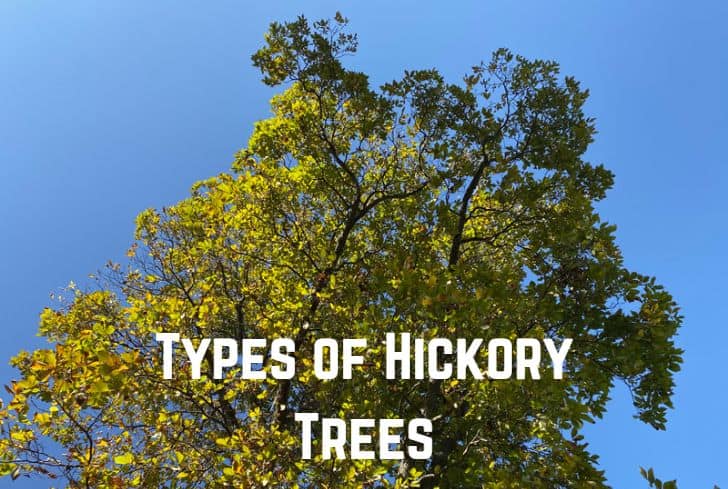Hickory trees are fascinating aspects of flora diversity. They are classified as deciduous trees, which means they are massive flowering plants growing up to 80 feet tall. You will often find them around environments with water bodies because they like moist soil.
The hickory tree is especially popular in the construction industry because of its hard, dense wood due to its slow and steady growth. They take their time to mature, often spending ten to fifteen years in the process.
Of course, there are many other exciting things about hickory trees, such as the tasty egg-shaped nuts they produce and their beautiful serrated leaves.
This article will explore 13 types of hickory trees. You will do well to stick around if this sort of information intrigues you. Let’s get started!
Different Types of Hickory Trees
Some of the common types of Hickory trees include:
1. Shagbark Hickory
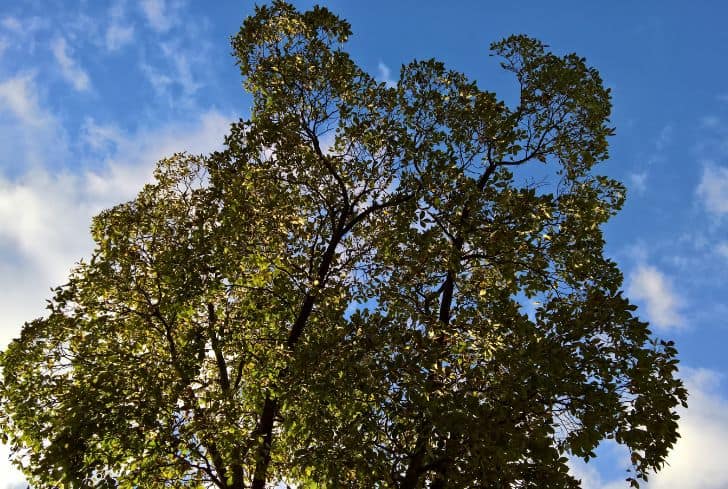
Carya ovata is a fascinating tree that grows tall and lives for a long time. It produces nuts too, that make an excellent snack for whoever finds or grows them, much like many other members of the walnut tree family.
It is called “shagbark” because the bark spreads and extends downwards at maturity, which can be attained around forty years. Shagbark sprouts five to seven leaflets per cluster.
Here is an interesting fact about the Shagbark. It can grow up to 100 feet in height (the tallest one is currently more than 150 feet tall) and live long enough (the oldest has been around for more than 350 years old).
Shagbark hickory trees can be found in cities like New York, Philadelphia, Illinois, Kansas, and Missouri. Like many other members of the hickory tree family, shagbark trees have a shock-resistant wood quality, which is not the only reason they are famous for producing sporting equipment, ladder rungs, and tool handles.
2. Shellbark Hickory
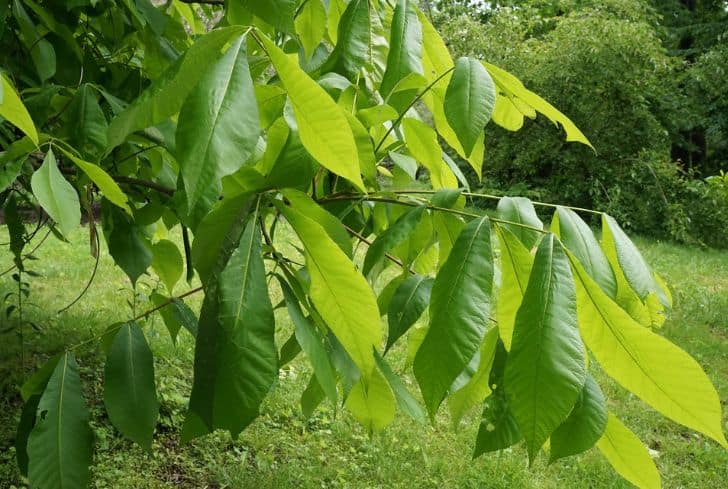
Carya laciniosa is another member of the hickory tree family, comprising eighteen known species. Although shellbark hickory trees don’t grow as fast as the others, they can also attain a whopping height of 120 feet.
And in case you want tasty nuts, this is the hickory species to turn to, which is why it has earned the moniker “king nut.” The leaves have serrated edges and often grow in clusters of seven.
Besides being the best nut production option, Shellbark trees are famed for their robust wood. This makes them the go-to for manufacturing furniture, drumsticks, and baseball bats.
Unfortunately, urbanization is winning against the domination of shellbark trees because they grow slower and cannot keep up. But you can still develop and nurture one, although it may not bear fruit for many decades.
Shellbark trees are also used for sporting instruments and farm tools.
You will find Shellbark trees in moist environments like Ohio, New York, and Tennessee.
3. Black Hickory
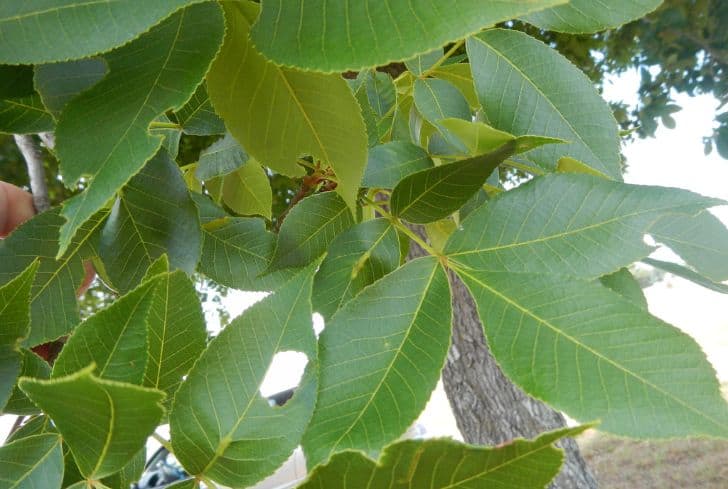
Black hickory has the scientific name Carya Texana. But its common name – black hickory – is derived from its grey or dark-colored bark that is closely ridged together. It grows up to 80 feet tall, considered not-so-high compared to other members of the hickory tree family.
But in some rare instances, this species of hickory can get pretty tall; it can reach 130 feet in its lifetime. With dark brown leaves against a darker shade on its bark, it should be easy to identify this species of the walnut family. Should you try the nuts?
Well, you may get lucky because they are sometimes sweet and other times make you wish you didn’t taste them due to how bitter they can be. In other words, the tastiness is a gamble.
Acidic soils are common growing environments for black hickory trees. Areas like Missouri, Louisiana, and Texas are places where clusters of black hickory trees grow.
Black hickory trees have robust and shock-resistant lumber too, but their common application is for fuel, as firewood.
4. Red Hickory
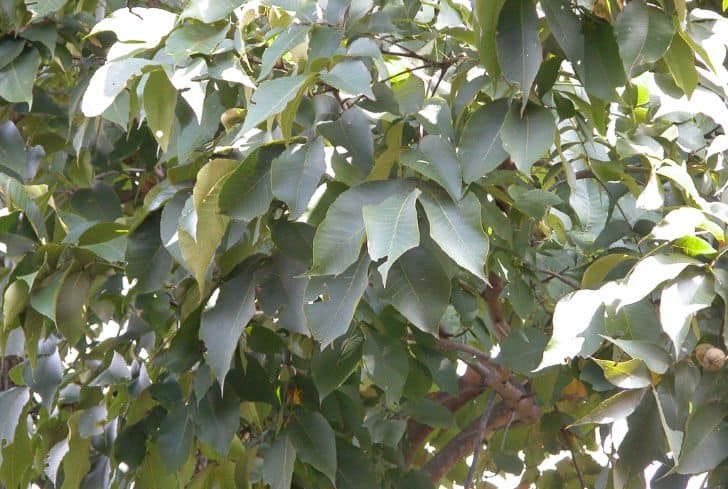
Red hickory is easy to identify because it genuinely has red undertones. It is scientifically called Carya ovalis. A few decades ago, a botanist worth their salt would have argued (and rightly!) that red hickory trees were a hybrid species formed from the procreation of shagbark and pignut hickory trees.
This may be why the nuts are not the tastiest in the bunch. It is advisable not to eat them; consider nuts from other members of the hickory family trees instead.
The red hickory tree also grows up to 80 feet in height. Branches closest to the ground grow downward, while those in the middle take a horizontal form. And you may have guessed it – those at the crown of the tree grow upward, pointing toward the sky.
Carya ovaris grows up to 150 years in areas like Florida, Maine, and Texas. You can eat the nuts from this walnut tree; they are tasty. Agricultural tools, ornamental purposes, and firewood are other ways to use the red hickory tree.
5. Pignut Hickory
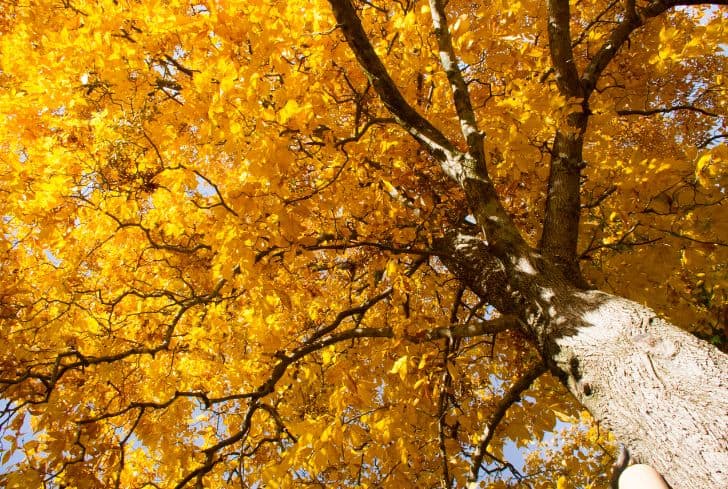
Carya glabra is the scientific name for the Pignut hickory tree. It is a monoecious tree (the tree sprouts male and female flowers) that grows up to 120 feet in height. Any soil will do when dealing with a pignut hickory tree, but the best condition is an acidic and well-drained environment.
The leaves grow in clusters of five to seven leaflets with serrated structures. It has a narrow peak and sprouts small, bitter kernels. Unlike many other hickory trees, you should not eat the nuts produced by the pignut tree.
In fact, it is called pignut because the nuts are not attractive to humans but to pigs and wild animals due to their bitter taste. The pignut hickory tree does not grow as fast as its peers, but its lumber is just as hardy.
This makes it a manufacturer’s favorite for the handle of tools and sporting equipment, including the structure of skis. Pignut hickory grows in areas like Georgia, Florida, and Alabama.
6. Sand Hickory
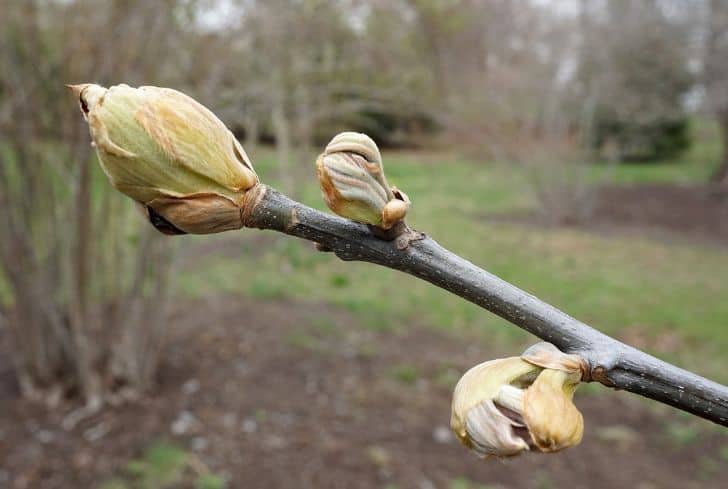
Also known as pale hickory and scientifically as Carya pallida, the sand hickory tree is one massive flora that loves moist and loamy environments. Although it grows to 100 feet tall, it attains this height slowly.
The extensive branches make it an excellent shade tree and can be found in areas like North Carolina, Ontario, and Minnesota.
It has a tough lumber quality that also makes it great for making the handle of tools. Sand hickory is also a go-to fuel source when considering hickory trees.
7. Bitternut Hickory
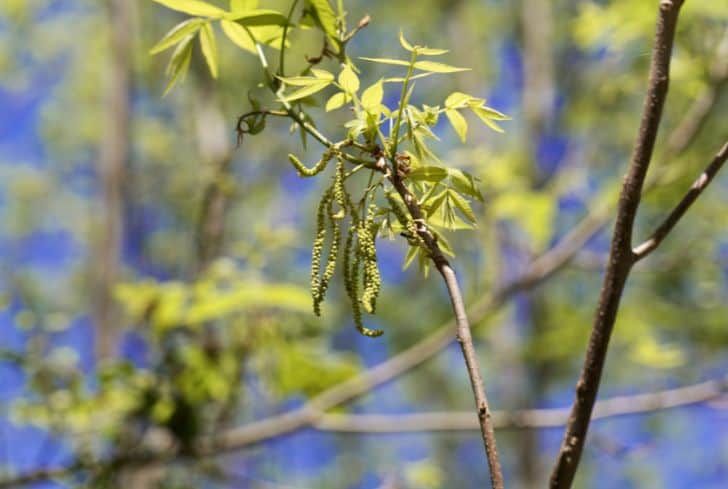
Call it Carya cordiformis, if you may, or the swamp hickory. The bitternut hickory tree, as it is commonly called, is infamous because of its bitter nuts. You do not want to try them.
The tree grows up to 80 feet tall in swampy and moist areas. There are seven to nine leaves per cluster, each having serrated edges. It has yellowish-green flowers at the beginning of its flowering season, and fruiting starts after two and a half decades of growth.
Bitternut hickory trees are excellent shade sources, making fantastic landscape additions as well. It is also used for construction, paper production, and furniture-making flooring.
8. Mockernut Hickory
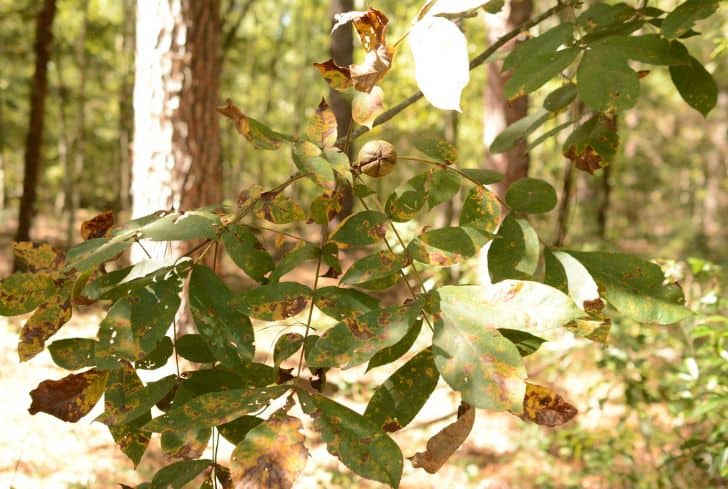
The scientific name of Mockernut hickory is Carya tomentosa, and like the other members of the Juglandaceae family, it is a large tree with big leaves. It has a gray bark with brown twigs and flowers that bud around April.
Mockernut trees grow up to 80 feet most times, but they can also attain 100 feet occasionally. It is not a fast-growing tree, but it will continually produce fruits or nuts (which develop from September to October) until old age (which ripens into 500 years).
Carya tomentosa grows in areas like Illinois, Ontario, and Michigan, where the soil is high and dry. It is attractive for the use of lumber, fuel for firewood, and food for wildlife.
9. Vietnam Hickory
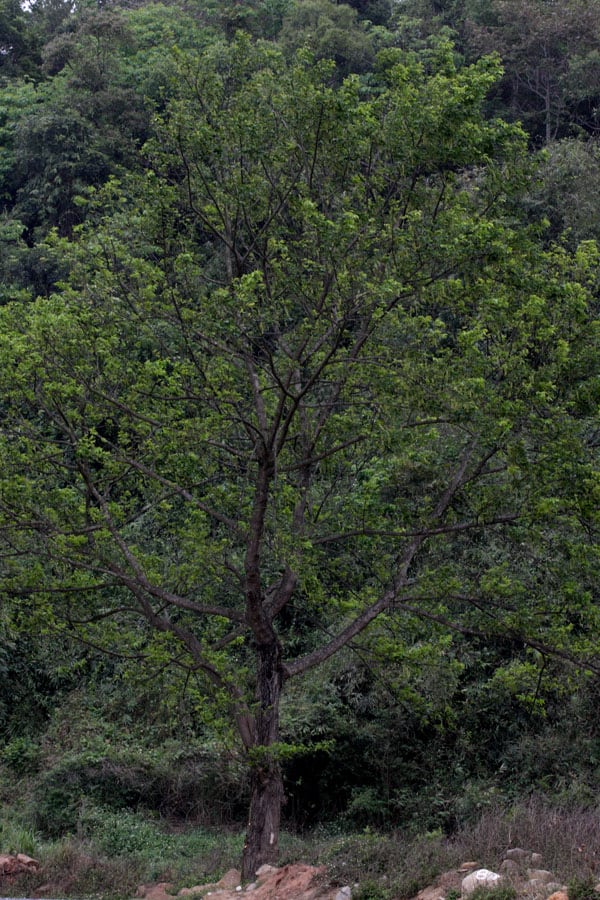
Henry Lecomte described the Vietnam hickory tree as the first member of the Carya family that didn’t have its origins in North America. This happened in 1921.
Carya tonkinensis is a flowering and fruiting hickory tree native to the Yunnan Province in China. It grows to 80 feet tall, but its starting point is 60 feet.
The tree has gray bark, like many other hickory trees. It has bright orange leaves which bloom between March to late June. Nuts are edible and have health benefits. The oil is extracted from them and brewed as a tea.
10. Chinese Hickory
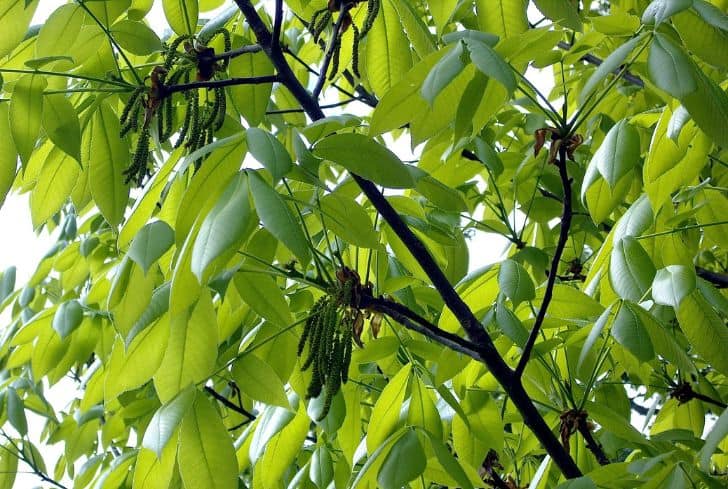
Carya cathayensis also has orange leaves, like the Vietnam hickory tree. It is also another member of the hickory tree family that isn’t native to North America. Chinese hickory trees come from Zhejiang Province.
It is a deciduous tree whose bark is smooth and white. It grows very slowly, often around the height of 60 feet. This is because it has a slow growth rate but thrives in a moist environment.
Chinese hickory is a strong type of wood preferred for creating wooden handles for tools. The tree is also a source of food and biofuel.
11. Nutmeg Hickory
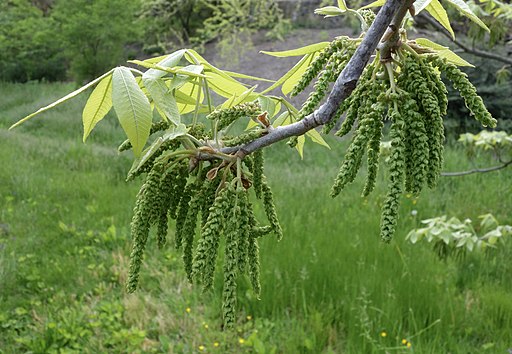
Nutmeg hickory is known as Carya myristicformis in the scientific world and is a rare find. This means you won’t always see it around, and it does not grow in clusters.
Carya myristicformis is called nutmeg hickory because its nuts have a similar structure to the popular nutmeg, and guess what? You can eat them. It prefers moist environments and can be found in areas like Arkansas and South Carolina.
12. Scrub Hickory
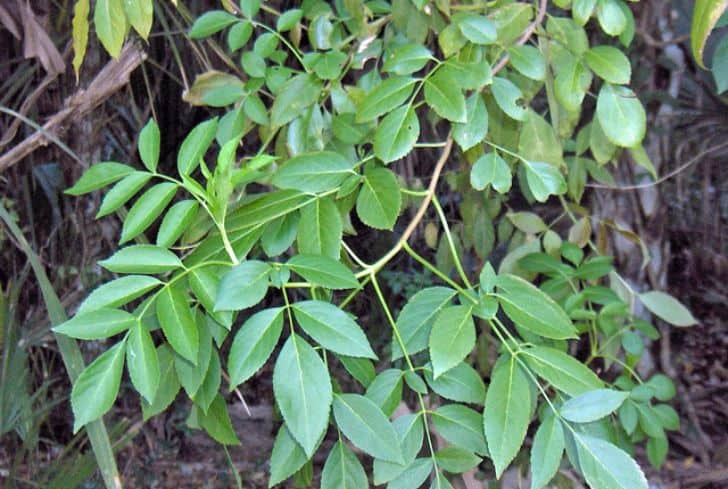
Carya floridana, or scrub hickory, as you may know it, is a hickory tree with broad leaves. It does not grow very tall, often between 15 to 70 feet and is limited in distribution in the US.
The fruits of a scrub hickory tree are sweet; they blossom in the autumn. Scrub hickory is used for fuel because of its impressive thermal ability.
13. Water Hickory
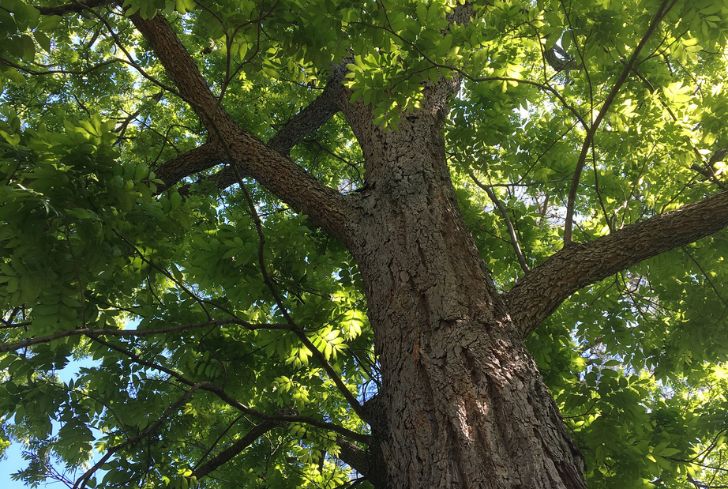
Water hickory is called Carya aquatica, which may be small when you describe it to someone. Another person may say it is a massive tree (because it grows up to 100 feet tall sometimes), and you would both be right. This is because the size varies, but the crown remains the same (can be described as irregular).
As the name suggests, water hickory trees grow in swampy areas, but they have a slow growth rate. You can find it in places like Virginia, Texas, and Florida.
